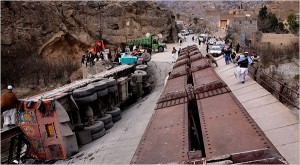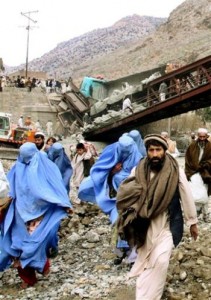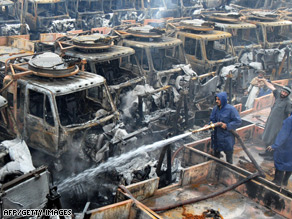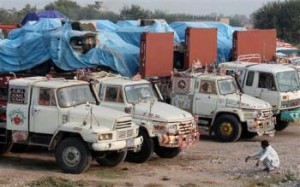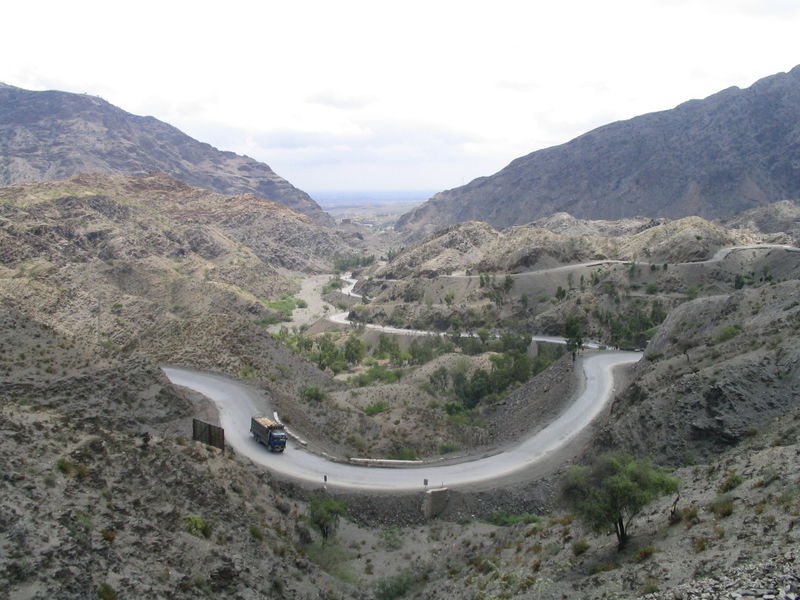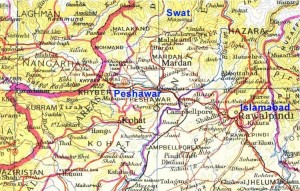The important and always interesting MEMRI has an article on current Pakistani military operations in the North West Frontier Province.
On June 28, 2008, the Pakistani government ordered a military operation against Islamist fighters in the tribal district of Khyber Agency, which borders on the North West Frontier Province (NWFP). The next day, Pakistani Prime Minister Yousuf Raza Gilani said at a hurriedly-called press conference in Lahore that this military operation was aimed at the Taliban and was launched as a last resort. He explained that his government’s policy vis-à-vis the Islamist militants was based on three components: launching a dialogue with the Taliban; offering a development package to the regions in which it is active; and ordering military action as a last resort.
Prime Minister Gilani criticized the Taliban’s actions in the areas under their control, such as burning down girls’ schools, beheading alleged criminals, closing down barbershops that do shaving of beards, disregarding the peace agreements with the NWFP government, and undermining the government’s authority in the federally administered tribal areas (FATAs) and in the NWFP.
It should be noted that the Islamist groups targeted by the military operation in Khyber Agency – namely Lashkar-e-Islam and its rival, Ansarul Islam – are not formally part of Tehreek-e-Taliban Pakistan (the Pakistani Taliban Movement). However, their objectives and actions are identical to those of the Taliban. These groups also constitute a good example of how small groups of criminals develop muscle over the years and acquire a set of ideological objectives, depending on the social context in which they evolve.
But this was not the main reason that prompted the Pakistani government to launch a military operation in the tribal district of Khyber. This district, which borders Afghanistan on one side and the NWFP on the other, is important not only because the main supply route of the U.S. forces in Afghanistan passes through it, but also because of its proximity to Peshawar, the NWFP capital. In fact, the operation focused on the town of Bara, just five km from Peshawar, where Lashkar-e-Islam headquarters are located. The immediate reason for the military operation is the Taliban’s gradual encroachment on this city.
Military operations are not targeting Baitullah Mehsud’s organization. They are targeting some very specific non-aligned groups that immediately threaten Peshawar. But if the disposition and ideology of these groups is identical to those of the Tehrik-i-Taliban, what is the expected disposition of the balance of the threats? After all, one might surmise that if the radicals in the Khyber Agency have the same goals as the Tehrik-i-Taliban, and Peshawar is under current threat, then the Tehrik-i-Taliban would be the next logical target.
We have long ago noted that the Pashtun rejected the global war on terror, and that the Pakistani Army believes that the war against the Taliban is American-made, and one in which Pakistan should not be engaged. So who, then, is the enemy? The Asia Times (“Sons of the Soil”) gives us a glimpse into the make-believe world of the Pakistani military leadership at the present.
The resilient Taliban have proved unshakeable across Afghanistan over the past few months, making the chances of a coalition military victory against the popular tide of the insurgency in the majority Pashtun belt increasingly slim.
The alternative, though, of negotiating with radical Taliban leaders is not acceptable to the Western political leadership.
This stalemate suits Pakistan perfectly as it gives Islamabad the opportunity to once again step in to take a leading role in shaping the course of events in its neighboring country.
Pakistan’s General Headquarters in Rawalpindi are thrilled with the Taliban’s sweeping military successes which have reduced President Hamid Karzai’s American-backed government to a figurehead decorating the presidential palace of Kabul; he and his functionaries dare not even cross the street to take evening tea at the Serena Hotel.
June (28 US combat deaths) was the deadliest month for coalition troops since they invaded Afghanistan in October 2001 and fatalities have increased steadily since 2004, when 58 soldiers were killed that year. The total more than doubled to 130 killed in 2005, 191 in 2006 and 232 in 2007. One hundred and twenty-seven have died so far this year.
Pakistan’s planners now see their objective as isolating radicals within the Taliban and cultivating tribal, rustic, even simplistic, “Taliban boys” – just as they did in the mid-1990s in the leadup to the Taliban taking control of the country in 1996. It is envisaged that this new “acceptable” tribal-inspired Taliban leadership will displace Taliban and al-Qaeda radicalism.
This process has already begun in Pakistan’s tribal areas.
A leading Pakistani Taliban leader, Haji Nazeer from South Waziristan, who runs the largest Pakistani Taliban network against coalition troops in Afghanistan, recently convened a large meeting at which it was resolved to once again drive out radical Uzbeks from South Waziristan. This happened once before, early last year.
In particular, Nazeer will take action against the Uzbeks’ main backer, Pakistani Taliban hardliner Baitullah Mehsud, if he tries to intervene. Nazeer openly shows his loyalty towards the Pakistani security forces and has reached out to other powerful Pakistani Taliban leaders, including Moulvi Faqir from Bajaur Agency, Shah Khalid from Mohmand Agency and Haji Namdar in Khyber Agency. Nazeer also announced the appointment of the powerful commander of North Waziristan, Hafiz Gul Bahadur, as the head of the Pakistani Taliban for all Pakistan.
The bulk of the Pakistani Taliban has always been pro-Pakistan and opposed to radical forces like Baitullah Mehsud and his foreign allies, but this is the first time they have set up a formal organization and appointed an amir (chief) as a direct challenge to the radicals.
There it is in a nutshell – the Pakistan strategy for the war on terror. The Pakistani military isn’t concerned about Nazeer’s military actions against the coalition in Afghanistan. They are siding with one Taliban faction against another in the hopes of the stability of the Pakistani government. Afghanistan is the sacrificial lamb in this deal.
As for the brave Nazeer’s first actions in this deal? Yes, it’s driving out those powerful Uzbeks from Pakistan! Without them the landscape takes a turn for the idyllic according the Pakistani military strategy. As for Baitullah Mehsud who has around 20,000 fighters, he will likely have none of this. Nazeer’s life will be in serious danger very soon if he pursues this plan. It’s more likely that it isn’t the plan at all. It’s more likely that Nazeer is playing the Pakistani military for fools.
As for the military actions near Peshawar, exactly what have they accomplished? MEMRI fills in the blanks.
The operation yielded the arrest of several civilians and low-ranking fighters. Pakistan’s mass-circulation Urdu-language newspaper Roznama Jang wondered who wrote the script for the Operation Sirat-e-Mustaqeem, stating that it targeted nothing more than “empty buildings [used by] the banned organizations Lashkar-e-Islam, Ansarul Islam and Amr bil Maroof wa Nahi al-Munkar,” and that “not one of the leaders or fighters [of these organizations] was captured.”
The heart for the struggle is gone. Military operations are conducted against pretend targets, deals are struck with local warlords who haven’t the power to really challenge the Tehrik-i-Taliban (and probably would’nt if they could), and the Uzbeks are bullied as if they constitute the real problem in Pakistan. When the Pakistani military and current political leadership awakens from this dangerous slumber and realizes that it has made a deal with the devil, it may be too late for at least large parts of Pakistan. Afghanistan will then be directly in the sights.
